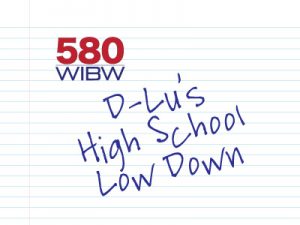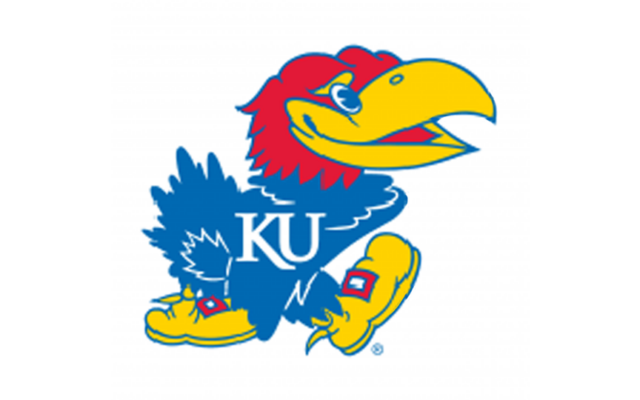OPINION: Conference Realignment Will Cost Topeka’s Prep Sports Scene Something Special

Picture a fall Friday night in the capital city back in 2016. A cool, crisp evening with the soft hum of the Friday night lights powering on across Topeka. Hummer Sports Park is filling with purple and gold as Topeka West and Topeka High renew their long-lasting TPS 501 rivalry. Up north, the student sections of Seaman and Hayden prepare to root on their teams at Seaman Stadium. And at Bowen-Glaze Stadium, Washburn Rural is hosting Shawnee Heights, their blue-on-blue uniforms contrasting with the red and white of the visitors.
Three games in the confines of the city on the same night. Three rivalry contests pitting generations of students, players, fans and neighbors against each other. Three chances for the casual fan to go watch two of the city’s high schools play each other, to watch a neighbor play against a friend’s son or a nephew battle one of his closest buddies. There’s something special about nights like those, and there was something special about that old Centennial League.
Now picture that same night in 2022. Topeka West is on the road, but they’re in Kansas City playing Piper. Shawnee Heights is at home, but they’re welcoming in Basehor-Linwood. And who knows who Seaman, Hayden, and Washburn Rural might be playing against that night – but it’s more likely than not the answer won’t be ‘each other’.
From the 2004-2005 to the 2017-18 athletic campaigns, all seven of the city’s schools called the Centennial League home. Shawnee Heights’ departure to the newly-formed United Kansas Conference, leaving the league they’d been part of for 42 years, has set the dominos to falling. Two weeks ago, Topeka West made it official that they’d be leaving the Centennial League, which they’d been in since 2004, and joining the UKC for the 2022-23 season. It appears highly likely that Seaman will make that same defection, per published reports. And Highland Park, who along with Seaman and Shawnee Heights was a founding member of the Centennial League back in 1962, is also leaning towards a departure, but absent an invite from the UKC, they could be headed for the Kansas City-Atchison League.
That would make for three different leagues for the city’s seven schools, and that’s leaving aside the question of what would become of the Centennial League and their members should the size of the league shrink to six. And it would make for a radically different prep sports landscape in Topeka.
The decisions made by each individual school to change their conference affiliation has, I feel, been driven almost entirely by football. When 5A and 6A switched from a four-team district schedule to seed the playoffs to a 16-team sub-state playoff model in 2017, it amplified the importance of a team’s overall record throughout the eight-game regular season. Instead of the most important games of the season being the final three, every game now became a must-win. Increasing the importance of the regular season, and thus, your league games, was a positive. But for a league like the Centennial League, with members in 6A, 5A, and (at the time) 4A, not everyone has the same ability to amass the wins they need to get the best playoff seed they possibly can.
The Centennial League’s 6A schools have dominated the league in football. Since Manhattan, Junction City, and Topeka High joined the league in 2004, 28 shares of a league championship have been handed out. (There were ties in 2004, 2006, 2013, 2014, 2015 and 2018, a three-way tie in 2017, and a four-way tie in 2012). Twenty-one of those belonged to 6A programs. Hayden claimed four league title shares, and Seaman, Shawnee Heights and Emporia each grabbed one. Manhattan, Junction City, and Topeka High have been consistently excellent in the last decade and a half, with Washburn Rural experiencing some stronger seasons in recent years. Those four 6A programs have run rampant over the rest of the league, and it has left the league’s smaller programs behind. And consistent losing has bred an inability for the Highland Park and Topeka West programs in particular to gain forward momentum, which could help to grow their programs.
Highland Park football has one win since 2012. Topeka West has four wins in their last four seasons, and none against any opponents who aren’t Highland Park. Seaman and Shawnee Heights have had better fortune, but have hardly been juggernauts. Seaman’s eight-win season in Glenn O’Neil’s first year on their bench in 2016 was their only winning season of the last decade, and Shawnee Heights had just three winning campaigns in their last ten seasons in the Centennial League.
The new football playoff format prioritizes wins. Wins, generally, are easier to come by against teams in the same classification. Therefore, if you’re a 5A school, it just makes more sense to pursue more games against fellow 5A schools. So I don’t blame Seaman, Shawnee Heights, Topeka West, or Highland Park for pursuing more 5A games at the expense of the 6A games they weren’t winning. For West and Park in particular, those programs badly need the experience of not just victory, but more competitive games; it has been hard for those programs to grow and maintain players when they have taken such lopsided losses to the Centennial League’s powers. But for all four schools, they are simply doing what is best for the most important sport in their athletic department.
Football is the front porch for every school. It’s true about major colleges and universities, and it’s true about high schools. Successful football programs keep people coming back for homecoming. They encourage school and community spirit. And they create momentum for the winter and spring seasons. It is imperative for Topeka’s 5A schools to pursue gridiron success, and them breaking off into different leagues gives them each the best chance to do just that, particularly under the current playoff structure, while still allowing Topeka High, Washburn Rural, and Hayden to maintain strong, winning programs.
However, two things can be true at the same time. It can be true that Shawnee Heights’, Topeka West’s, and likely Seaman’s and Highland Park’s moves are in the best interests of their football program, and their athletic departments as a whole, and can be a net positive for them long-term. It can also be true that these moves, while a net gain for the individual schools, are a net loss for this city’s high school sports scene.
There was undeniably something special about having all seven city schools under the same conference affiliation. Having all seven programs playing important league games created exciting rivalries and races/meets in all of the sports that aren’t football. Every single night of competition provided a chance to see neighbor battle neighbor, friend battle friend, legacy battle legacy. In a place like Topeka, where the high schools are part of distinct communities and where generations have ties to the schools where their sons and granddaughters now play, those intra-city showdowns carry that much more importance. And while it’s true that they won’t disappear entirely, they also won’t be prioritized in the same way, and some of them will naturally have to be sacrificed in the name of league schedules. If Seaman joins the UKC to create a nine-team league, and the league plays a full league football schedule, the Seaman-Hayden and Seaman-Washburn Rural football rivalries are a thing of the past. The same is true should the Centennial League add members or should its existing members join a different, larger league.
High school sports existed in Topeka before all its teams were in the same league, and they’ll exist after this conference realignment carousel stops spinning. But they will be different. A little less special. The hope is that long-term gains made by the city’s 5A schools in football will make it all worth it. But there will be something lost that no amount of football success can replace.


